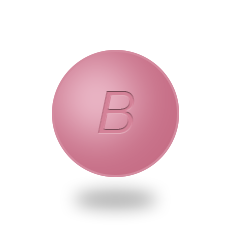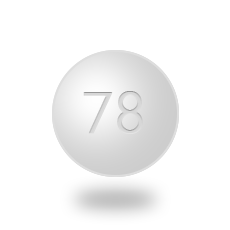Yasmin
Yasmin is commonly called as ethinyl estradiol and drospirenone. Yasmin is a combination birth control drug made up of estrogen and progesterone. This drug shows its action by stopping the ovulation, altering the uterine lining and thickening the cervical mucus.

Uses
This drug is used for the prevention of pregnancy. It may also be utilized for other medical conditions as directed by your pharmacist or doctor. Birth control pills can also be used for the treatment of PMDD or premenstrual dysphoric disorder or normal acne. The intake of this medicine does not prevent the sexually transmitted diseases like gonorrhea, HIV, Chlamydia.
How To Use
Take this drug orally with/without food as told by the doctor, generally once in a day. Taking this drug at bedtime or after dinner will reduce the chances of nausea and stomach upset. Avoid skipped doses. If you miss pills then you are more likely to become pregnant, therefore begin with a new packet afterwards at a different time than usual. The packet contains 21 pills with hormonal (active) medication. Seven inactive reminder pills are also present at the end of the packet which does not contain any hormone.
You should start taking Yasmin on the first day of your menstrual cycle (start on day 1) or on the first Sunday after the start of your menstrual cycle (start on Sunday).
Start on day 1 of the cycle
During the first cycle of use of Yasmin, a woman should take 1 pink tablet daily, starting on the 1st day of the menstrual cycle (the first day of menstruation is the 1st day of the cycle). The patient should take 1 pink tablet daily for 24 consecutive days, followed by 1 light orange tablet daily for 25-28 days of the cycle. Yasmin should be taken as directed on the package at the same time each day, preferably after dinner or at bedtime, with a small amount of liquid if necessary. Taking Yasmin does not depend on food intake. If Yasmin is taken for the first time not on the 1st day of the menstrual cycle, but later, the contraceptive effectiveness of the drug occurs only after the first 7 days of its continuous use. In this case, additional use of non-hormonal contraceptives is required during the first 7 days of taking Yasmin. The possibility of ovulation and fertilisation before starting the drug should be taken into account.
Start on Sunday
During the first cycle of use of Yasmin, a woman should take 1 pink tablet daily for 24 consecutive days, and then 1 light orange tablet daily for 25-28 days of the cycle. Medicine should be taken according to the instructions on the package at the same time each day, preferably after dinner or at bedtime, with a small amount of liquid if necessary. Taking Yasmin does not depend on food intake. The contraceptive effectiveness of Yasmin occurs no earlier than after 7 days of continuous use. Additional use of non-hormonal contraceptives is required during the first 7 days of taking Yasmin. The possibility of ovulation and fertilisation should be taken into account before starting the drug.
The patient should start the second and all subsequent 28-day courses of Yasmin on the same day of the week as the first course and follow the same dosing regimen. The pink tablets should be started on the day after the last light orange folate tablet, regardless of whether the period has started or is expected to start. Whenever the next course of Yasmin is started on a day other than the day after the last light orange tablet, the patient should use another method of contraception until the period of taking the pink tablets of Yasmin is 7 consecutive days.
Switching from other contraceptive pills
When switching from other contraceptive pills, Yasmin should be started on the day when you would have started taking the pills from a new pack of the previous oral contraceptive.
Switching from a contraceptive method other than the contraceptive pill
When switching from a transdermal patch or vaginal ring, Yasmin should be started on the day when the next use of these contraceptives is due. When switching from injectable contraceptives, drug should be started on the day when the next injection is due. When switching from an intrauterine device or implant, Yasmin should be started on the day of their removal.
Withdrawal bleeding usually occurs within 3 days after taking the last pink tablet. If you experience bleeding or breakthrough bleeding while taking Yasmin, you should continue using it according to the regimen described above. Such bleeding is usually temporary and not clinically significant, but in case of persistent or prolonged bleeding, the woman should be examined by a doctor.
Despite the fact that the incidence of pregnancy when using Yasmin according to the instructions is low, the possibility of pregnancy should be considered in the absence of withdrawal bleeding. If the patient does not adhere to the prescribed dosing regimen (skipping 1 or more active tablets or starting them on a different day than the required one), the possibility of pregnancy should be considered at the first absence of withdrawal bleeding and appropriate diagnostic measures should be taken. If the patient has adhered to the prescribed regimen and has not had two consecutive bleeds, pregnancy should be excluded. If pregnancy is confirmed, the use of Yasmin should be discontinued.
Side Effects
Vomiting, nausea, bloating, headache, swollen feet or ankles, weight change, breast tenderness or fluid retention in ankles may occur. During the initial months of usage, people may complain of vaginal bleeding between menstruation and irregular/missed periods. If these effects worsen or continue further, consult your doctor promptly. This drug may result in an increase in the blood pressure. Therefore keep a regular check on your blood pressure and observe any fluctuations. Let your doctor know if you observe any of the subsequent adverse side effects: missed periods, abnormal variation in vaginal bleeding, continuous spotting, severe bleeding, and high potassium level in blood. This medicine may sometimes be responsible for some fatal blood clotting problems like pulmonary embolism, heart attack, stroke, deep vein thrombosis. Get immediate medical help if you experience: abnormal sweating, shortness of breath, abnormal headaches, deteriorating migraines, one-sided weakness, sudden dizziness, vision disturbances or slurred speech.
Contraindications
Yasmin is contraindicated in patients having a history of severe blood clots in eyes, lungs or legs, blood clotting disorders, high blood cholesterol levels, hypertension, lupus, hypercalcemia, pancreatic problems, seizures, chorea, swelling problems, gallbladder disorders, fluid retention, breast cancer or some blood vessel disorders like stroke, brain hemorrhage and heart attack. Do not use this medicine if you have some blood disorders like porphyria, heart valve problems, irregular menstrual cycle, kidney disease, abnormal mammograms jaundice-yellowish eyes or skin during pregnancy, liver tumors or liver disorder, adrenal disease chest pain because of angina, firbrocystic breast disease, migraines or headaches with aura, severe uncontrolled hypertension, diabetes, cervical, vaginal or endometrial cancer or undiagnosed vaginal bleeding.
Pregnancy And Yasmin
Do not use this drug during the gestation period. This medication can be excreted into the maternal milk and affect the breast milk production. This medicine may also cause damage to a nursing baby. Avoid breast-feeding while using Yasmin.
Related Drugs
Plan B
Conditions:
Birth Control

Levlen
Conditions:
Birth Control

Ortho Tri-Cyclen
Conditions:
Birth Control

Ovral
Conditions:
Birth Control




